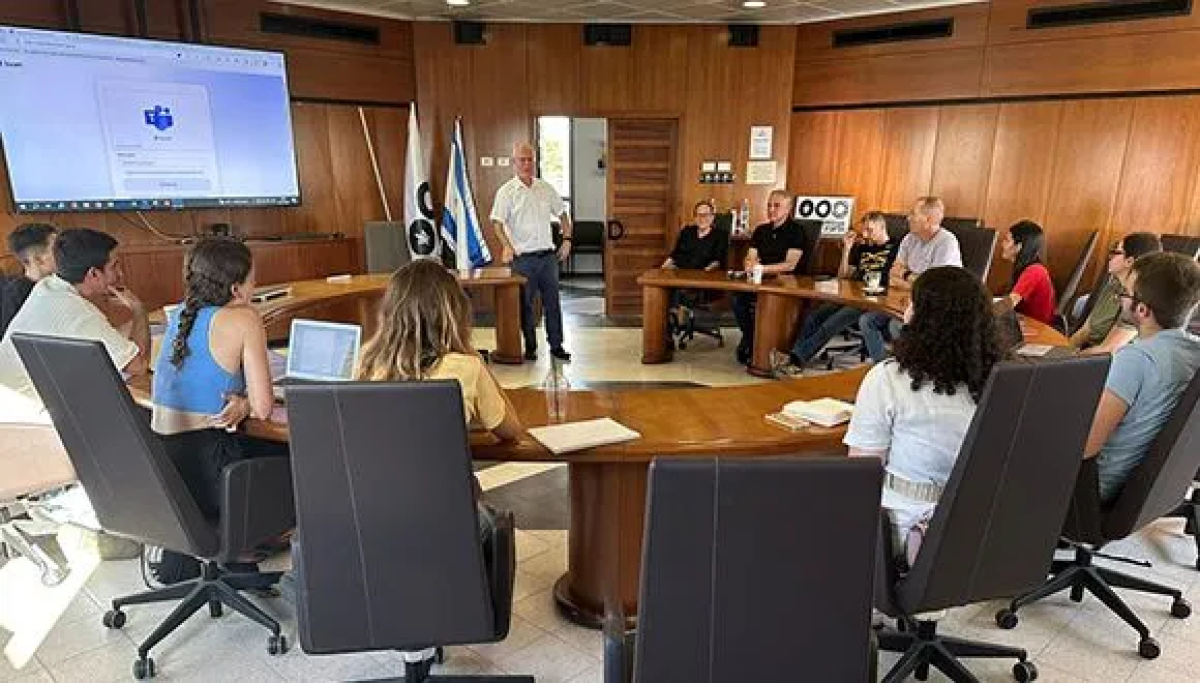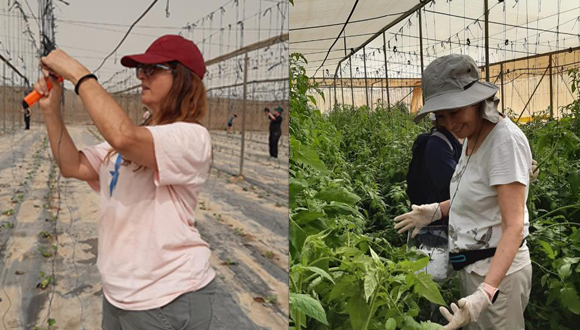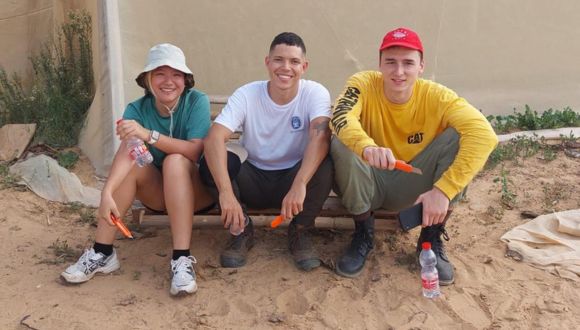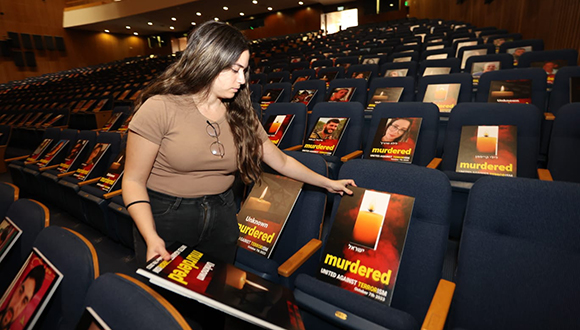A Letter from VERA – Association of University Heads, Israel
Expressing deep concern over the discourse emanating from academia following the devastating Hamas attack on Israel on October 7.
November 1, 2023
Dear Colleagues,
We, the leaders of Israeli universities and research institutions, write to express deep concern over the discourse emanating from academia following the devastating Hamas attack on Israel on October 7 and the inadequate response, in many cases, by academic leadership.
On that darkest of days, in a tragedy unprecedented in Israel’s 75-year history, the Hamas terrorists infiltrated into the country and murdered more than 1,400 people, including infants, children, students, and senior citizens —Jewish, Muslim, and Christian alike. The attack also included the abduction of 240 civilians of all ages into Gaza; additional missing persons have not yet been identified and accounted for. In the aftermath of these horrific events, we find it disturbing that certain narratives from academic institutions misrepresent the situation, or, in the worst cases, actively target Israelis and Jews.
We find ourselves facing a war on two fronts: one against the atrocities of Hamas, and another in the global arena of public opinion. Regrettably, we have noticed an alarming trend in which Israel, despite its right to self-defense, is mischaracterized as an oppressor. This is a false equivalence between the actions of a murderous terrorist organization and a sovereign state’s right to defend its citizens, which unfortunately results in the loss of innocent Palestinian lives. Any attempt to justify or equivocate Hamas’s brutal and grotesque actions is intellectually and morally indefensible.
It’s unsettling to note that many college campuses have become breeding grounds for anti-Israel and anti-Semitic sentiments, largely fueled by a naïve and biased understanding of the conflict. It is ironic that the very halls of enlightenment in America and Europe, ostensibly the bastions of intellectual and progressive thought that are your campuses, have adopted Hamas as the cause célèbre while Israel is demonized. Universities, as hubs of enlightenment and rational discourse, must take responsibility for the views they perpetuate.
There is no moral equivalency here. Let’s be clear: Hamas shares no values with any Western academic institution. Hamas is an organization that has repeatedly pledged to annihilate Israel and its people.
Its ideology is antithetical to the values of human life and the liberal values we hold dear. Hamas funnels international aid into armament rather than to the welfare of its citizens. While Israel uses its weapons to shield its citizens, Hamas uses its citizens as shields for its weapons—which it hides in hospitals, schools, and mosques. It is crucial to distinguish between Hamas’ terrorist objectives and the legitimate aspirations of the Palestinian people for statehood. The conflation of the two only serves to fuel hatred and ignorance.
Academic institutions stand as lighthouses in the intellectual landscape, and we ask you to illuminate them. Your roles as leaders of these institutions confer upon you an extraordinary responsibility: to guide the moral and ethical development of your students, to imbue them with the ability to think critically and to discern the nuances that separate right from wrong. Freedom of speech is a cornerstone of academic freedom, but it should not be manipulated to legitimize hate speech or to justify violence.
We urge you to delineate the boundaries between constructive discourse and destructive propaganda, and promote evidence-based, nuanced thinking that challenges simplistic narratives. Expose the falsity of justifications for acts of terror; expose and condemn disingenuous statements; and reject hypocritical voices that justify murder, rape, and destruction in the name of “resistance”.
Moreover, we expect that Israeli and Jewish students and faculty on university and college campuses will be accorded the same respect and protections as any other minority. The principles of inclusivity and campus safety must unequivocally extend to include Israeli and Jewish members of your academic communities. Just as it would be unthinkable for an academic institution to extend free speech protections to groups targeting other protected classes, so too should demonstrations that call for our destruction and glorify violence against Jews be explicitly prohibited and condemned.
What the world witnessed on October 7 were not methods to help disadvantaged peoples build better futures for themselves. The events of this terrible day should be taken as a wake-up call to all of the dangers of nihilistic organizations like Hamas and ISIS that represent the very opposite of freedom and liberty.
As leaders of Israeli universities, we have been heartened by clear statements of solidary and support for Israel, which are, at their heart, statements in solidary with humanity, enlightenment, and progress. At the same time, we are calling for a sea change in clarity and truth in academia on the matter of Israel’s war against Hamas, so that light will triumph over dark, now and always.
Signed,
Prof. Arie Zaban, President of Bar-Ilan University.
Chairperson of Association of University Heads – VERA
Prof. Daniel A. Chamovitz, President of Ben-Gurion University of the Negev
Prof. Alon Chen, President of Weizmann Institute of Science
Prof. Asher Cohen, President of the Hebrew University of Jerusalem
Prof. Leo Corry, President of the Open University of Israel
Prof. Ehud Grossman, President of Ariel University
Prof. Ariel Porat, President of Tel-Aviv University
Prof. Ron Robin, President of University of Haifa
Prof. Uri Sivan, President of the Technion-Israel Institute of Technology




 The initiative was started by Dr Anat Gafni and Prof. Ram Fishman who both teach on the international master’s program in
The initiative was started by Dr Anat Gafni and Prof. Ram Fishman who both teach on the international master’s program in  Dr. Gafni (right) at the farm
Dr. Gafni explains: “We left at 7 a.m. from the university and didn’t come back until 6 p.m. It was a whole day of hard work, but it was very rewarding because the family of the farmer lost one person who was killed in the attack, and they were happy to see us.” This week, several students will also work on one of the farms.
Dr. Gafni (right) at the farm
Dr. Gafni explains: “We left at 7 a.m. from the university and didn’t come back until 6 p.m. It was a whole day of hard work, but it was very rewarding because the family of the farmer lost one person who was killed in the attack, and they were happy to see us.” This week, several students will also work on one of the farms.
 Jose Cristobal Padilla Arias (in the middle) with other international student volunteers
Jose Cristobal Padilla Arias, another student volunteer, shares his impressions:
“Before I came to Israel, I knew from my friends about volunteering in general. As for this particular initiative, I heard about it on the WhatsApp group we have for our program.
When we got to the farm, the owner put us into groups and explained what to do. I worked in a zucchini greenhouse, putting in trellises to support the plants and help them guide themselves up.
It was a very nice experience because I got to meet many new people. It also made me realize how important the sense of community is– with people working together for a common cause.
It’s a good way to acknowledge the hard work that agriculture involves, which makes you value it more. After all, agriculture is one of the fundamental elements of an economy– it provides us with food.”
Jose Cristobal Padilla Arias (in the middle) with other international student volunteers
Jose Cristobal Padilla Arias, another student volunteer, shares his impressions:
“Before I came to Israel, I knew from my friends about volunteering in general. As for this particular initiative, I heard about it on the WhatsApp group we have for our program.
When we got to the farm, the owner put us into groups and explained what to do. I worked in a zucchini greenhouse, putting in trellises to support the plants and help them guide themselves up.
It was a very nice experience because I got to meet many new people. It also made me realize how important the sense of community is– with people working together for a common cause.
It’s a good way to acknowledge the hard work that agriculture involves, which makes you value it more. After all, agriculture is one of the fundamental elements of an economy– it provides us with food.”











